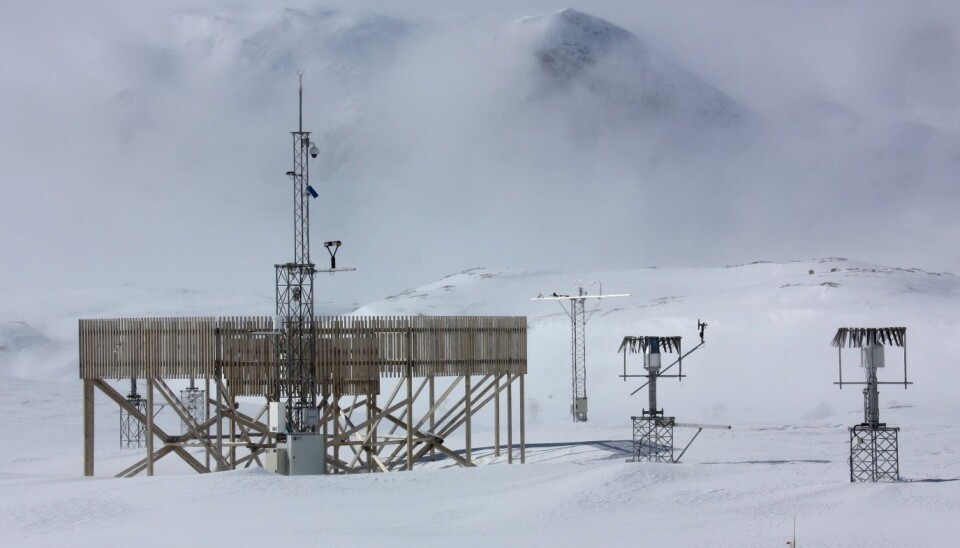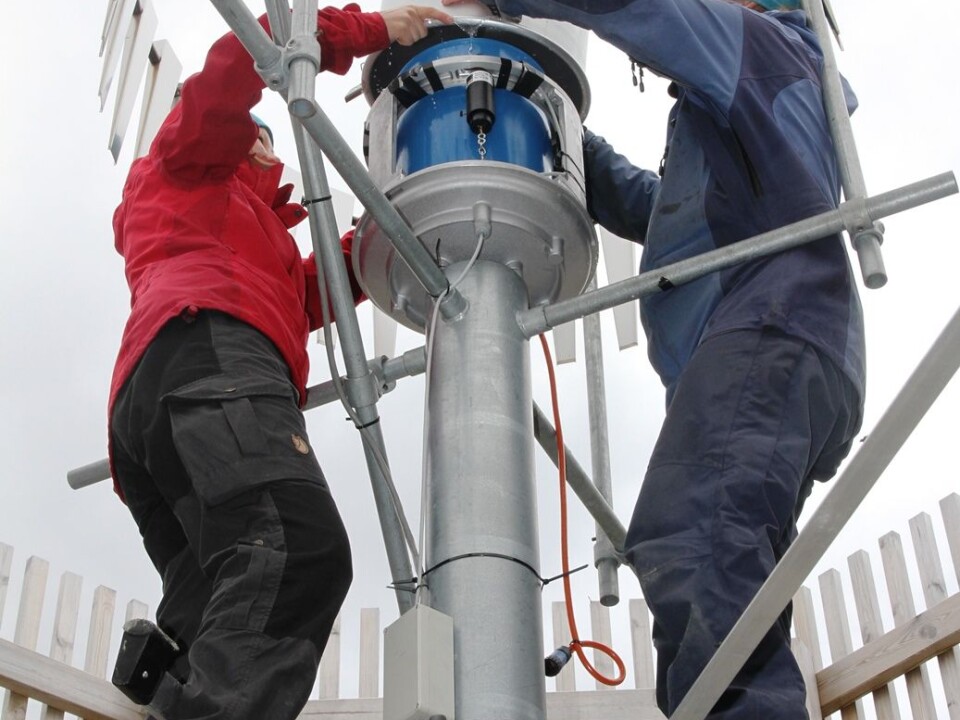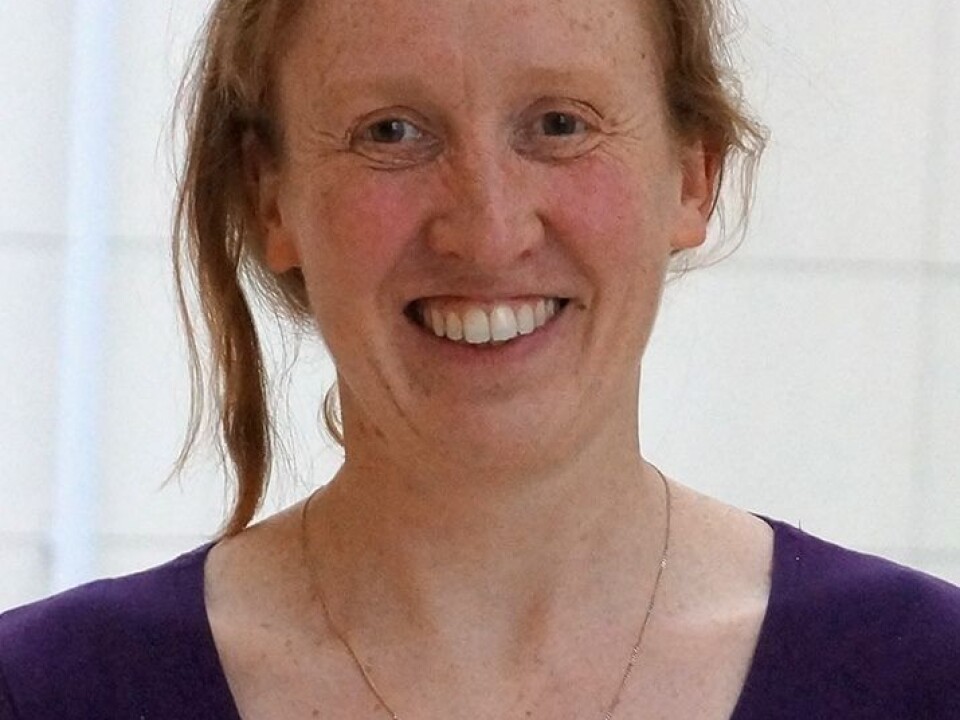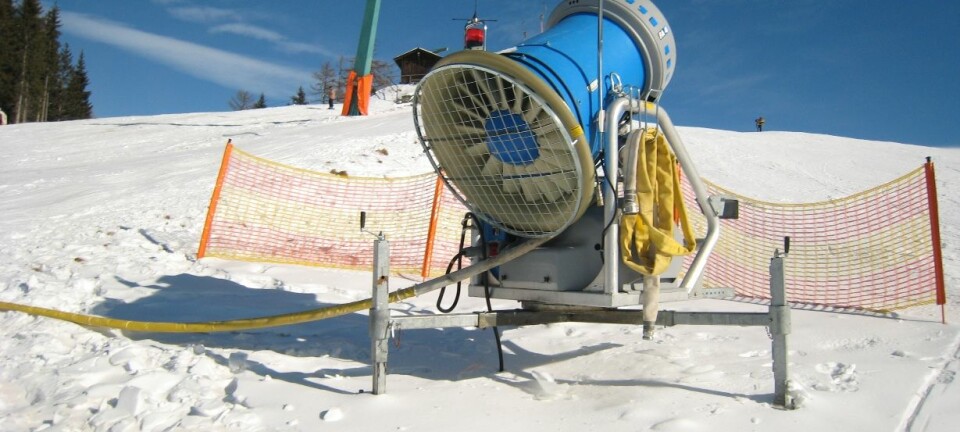
Measuring snowfall in windy mountain areas
A new statistical model may finally give meteorologists a better handle on snowfall amounts, even when measurements are made where snow is blown wildly into drifts. This information can boost hydropower efficiency as well as help us better understand climate change.
Denne artikkelen er over ti år gammel og kan inneholde utdatert informasjon.
Meteorologists have had surprisingly little to go by when estimating snowfall in spots where winter gales and storms blow – like in the Norwegian mountains.
The problem that plagues meteorologists in pursuit of precise precipitation measurements boils down to gauge design. The typical snow gauge measures solid precipitation by catching snow in large plastic buckets.
Anybody who has experienced the Norwegian mountains in rough weather knows that the snow doesn’t fall vertically or drift down gently. Weather stations on mountain plateaus are whipped by the same winds as hapless skiers – snowflakes race by in a blur, more or less horizontally, so that only snow that is blown right into the bucket gets measured.
“So we haven’t really known how much snow has fallen,” explains Mareile Wolff, a researcher at the Norwegian Meteorological Institute. She is in charge of data for the research project “Wind correction of precipitation”, which will now be inform Norwegians how much snow the mountains really get.
Minimizing wind impact

Scientists have found a formula for calculating the error in wind bias made by most weather station gauges that measure precipitation.
They developed it by measuring precipitation at a custom-built weather station at Haukeliseter in Telemark County. The gauge has an extra wind shield for a more accurate collection of snow.
The double set of wind fences lets only 20 percent of the wind blow through. Inside the concentric fences the snow falls vertically.
The test station provides much better measurements than normal weather stations, according to the figures from three winter seasons.

Only ten percent of dry snow blows right by, compared to as much as 80 percent during windy conditions at normal alpine weather stations.
The researchers measured amounts of precipitation over a certain size, wind speeds and temperatures. Quantities of snow were measured once a minute, much more often than at standard weather stations.
After they had collected sufficient data they conducted a statistical analysis of the information. They used computers to come up with a formula that accounts for errors in measurements caused by blizzards and the like.
Snowfalls affect electricity prices
Hydropower companies have known that traditional snow measurements have been erratic and imprecise, which is why they financed much of the research. They need accurate measurements of how much snow has fallen so they can predict how much runoff water to expect.
Nearly all of Norway’s electricity comes from hydroelectric power. Lakes, reservoirs and rivers rise when it rains or when snows melt.
Until now, power companies have only measured reservoir water levels after snow has melted. They see disparities between actual water supplies and the amounts of snow measured at alpine weather stations.
Increasing profits
Power producers in Norway sell electricity on an exchange. Power companies stake a lot on estimates of future prices. If high prices are anticipated six months ahead, Statkraft buys cheaper electricity on the exchange and saves water in the reservoirs until it can get more for its product.
“We can earn more money using this formula. It makes us more secure in our knowledge of how much water we will have in times ahead and we can use the water more wisely,” says chief hydrologist Tom Egil Andersen at Statkraft Energi. Statkraft participated in the project.
Power producers can fail to foresee how full reservoirs will get and as watercourses swell they end up with more water than they can cope with. They then have to divert the excess past hydroelectric plants instead of through turbines to prevent flooding.
Indicating climate change
The scientists are actually more interested in long-term climate change than in short-term profits. The station at Haukeliseter will now continue to be used after the hydropower project ends. Global warming is expected to affect Norway by increasing precipitation amounts. And more of this is expected to fall as rain rather than snow.
“If we have poor measurements of snow quantities it’s hard to say whether precipitation levels are actually changing. We might inadvertently measure a rise in precipitation because rain is easier to measure than snow. Now we can determine how much precipitation has fallen year to year, whether it be rain or snow,” says Wolff.
The scientists now plan to test their snow formula around the world, from Chile to Australia, in the World Meteorological Organization’s Solid Precipitation Intercomparison Experiment (SPICE). But they are far from certain that the Norwegian formula will apply to other weather conditions.
--------------
Read the Norwegian version of this article at forskning.no
Translated by: Glenn Ostling































